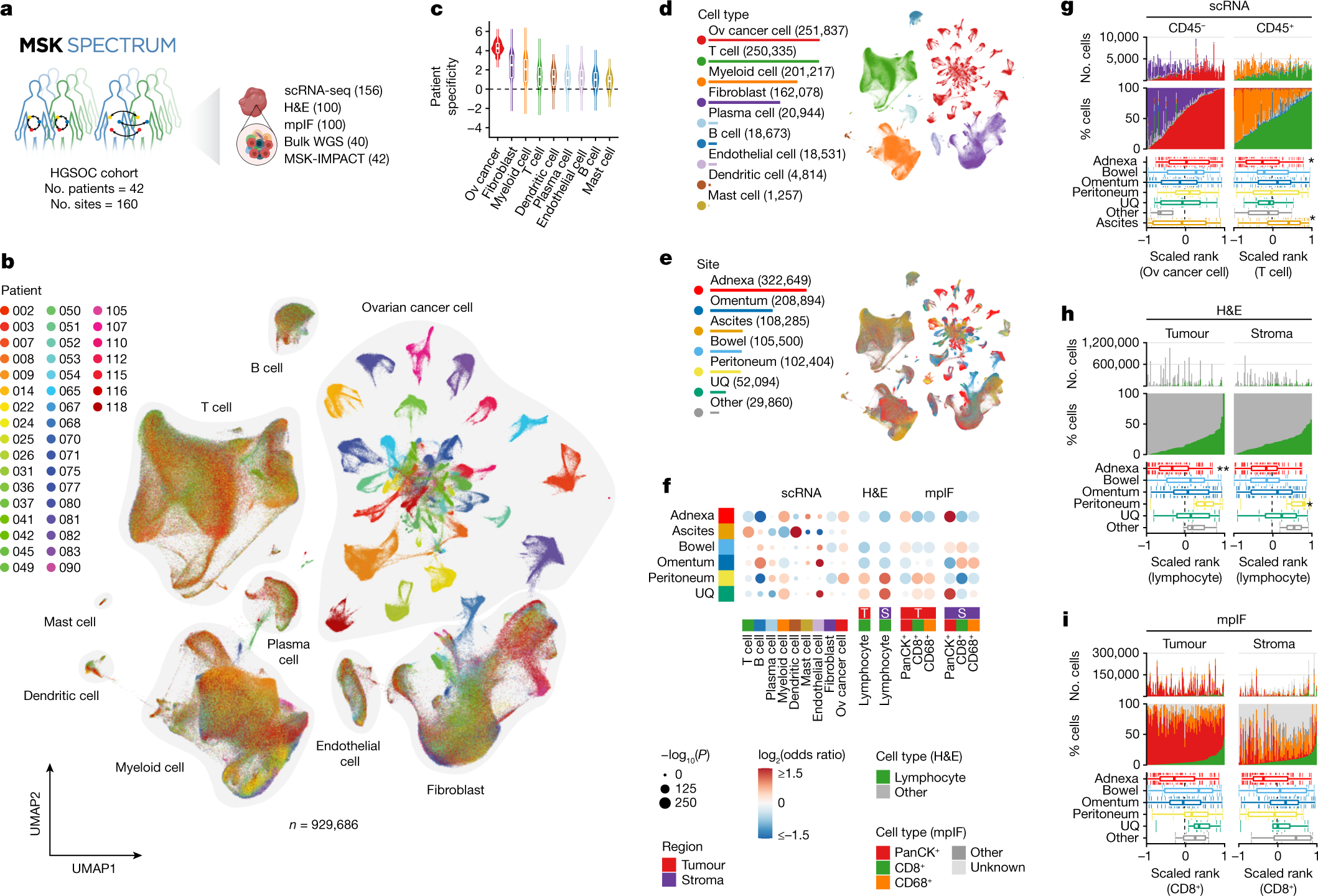Dr. Sohrab Shah et al. published the paper Ovarian cancer mutational processes drive site-specific immune evasion in Nature. High-grade serous ovarian cancer (HGSOC) is an archetypal cancer of genomic instability patterned by distinct mutational processes, tumour heterogeneity and intraperitoneal spread. Immunotherapies have had limited efficacy in HGSOC, highlighting an unmet need to assess how mutational processes and the anatomical sites of tumour foci determine the immunological states of the tumour microenvironment. Here we carried out an integrative analysis of whole-genome sequencing, single-cell RNA sequencing, digital histopathology and multiplexed immunofluorescence of 160 tumour sites from 42 treatment-naive patients with HGSOC. Homologous recombination-deficient HRD-Dup (BRCA1 mutant-like) and HRD-Del (BRCA2 mutant-like) tumours harboured inflammatory signalling and ongoing immunoediting, reflected in loss of HLA diversity and tumour infiltration with highly differentiated dysfunctional CD8+ T cells. By contrast, foldback-inversion-bearing tumours exhibited elevated immunosuppressive TGFβ signalling and immune exclusion, with predominantly naive/stem-like and memory T cells. Phenotypic state associations were specific to anatomical sites, highlighting compositional, topological and functional differences between adnexal tumours and distal peritoneal foci. Our findings implicate anatomical sites and mutational processes as determinants of evolutionary phenotypic divergence and immune resistance mechanisms in HGSOC. Our study provides a multi-omic cellular phenotype data substrate from which to develop and interpret future personalized immunotherapeutic approaches and early detection research.
You can read the paper in Nature here.

